A ten square meters house made of straws and mud. One bed for the whole family, one table and a stove, where even animals’ feces were burnt in the winter, for a bit of warmth. Patchy, shabby clothes, passed on from the older brother to the younger sisters. A herdsmen life in the endless desert that was constantly storm-swept by moving sands, always changing the path of the dunes. But aside from them, nothing else seemed to ever change.
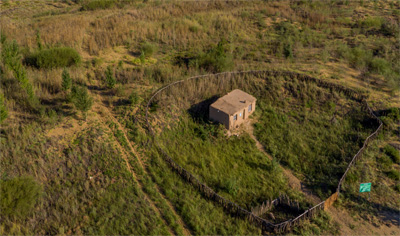
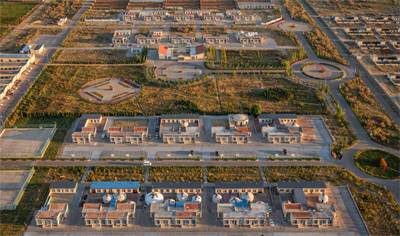
Thirty years later, a modern village has placed its stylish colorful geometry on the sands that used to be so hostile. Its villagers enjoy running water, electricity, internet and television. They have jobs and a school for their children. The lives of more than 100,000 people have radically changed due to an admirable initiative which became a real international model in desertification control. A business necessity gave birth to an idea; the idea created a partnership and the partnership made it possible for the lives of farmers and shepherds in the Kubuqi desert (located in Inner Mongolia, China) to change for the better, through almost three decades.
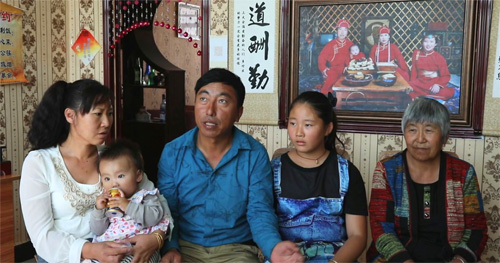
Babu is one of these people: he is 40 years old now and he grew up in that tiny mud house. His parents never saw anything but the infinity of sand sprawling around. They survived by raising livestock and digging for wild licorice, which they sold for poor money. The nearest market was over 20 km away, and that meant a three days round journey on camels. No roads, no water, no electricity, no medical care, no green – that was the life of the shepherds of the desert. Along with his kind wife, Yao Liyuan, Babu did nothing else but to follow the same weary routine inherited one generation after another and to hope for a different path in his future.
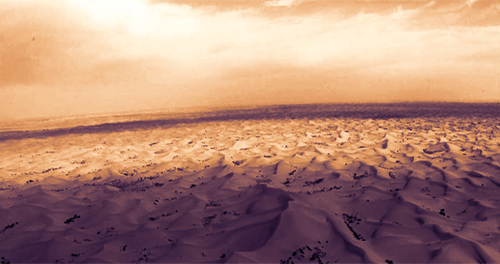
In 1988, when he was only 28 years old, Wang Wenbiao (who is now the CEO of Elion Resources Group) was appointed executive of a salt factory located far away in the Kubuqi desert. This is the seventh most extended desert in China, unfolded on 18.600 square km. Its frequent sand storms used to becloud even Beijing, the capital city of China. They also constantly blocked the activity of the salt factory: the transportation took the hardest hits, as the vehicles had to go around almost 300 km to avoid facing the dangerous sand dunes. The profits of the company were seriously affected, under these circumstances. It was then that Wang Wenbiao initiated a series of actions which later on would break fresh ground for an incredible ecological adventure which nowadays is acknowledged as a true international model and inspiration.
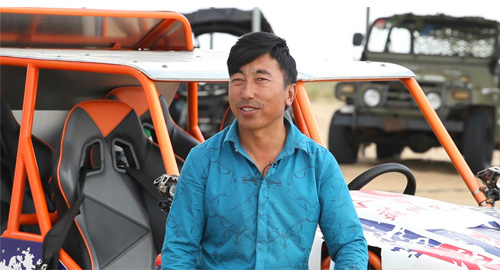
Thus, Elion Group decided to plant trees in order to stabilize the sand dunes and to build a highway through the desert. This private initiative, generated by business reasons, was the foundation of a future public – private – people (PPP) partnership that targeted desertification control by bringing a part of the desert back to life and developing a green economy based on local resources and renewable energy. A certain percentage from the sale of every ton of salt was put aside in a special fund dedicated to reforestation; a team of 27 people started planting trees, first of all around the factory. In China, over 2,6 millions square km (almost 27% of the entire territory) are affected by desertification; this influences the lifestyle of one third of the population. Desertification is one of the biggest environmental challenges of the present and a major factor in generating poverty, migration and social instability. Nevertheless, China also holds an undesired first place in carbon emissions.
Given this context, the Chinese government has adopted several public policies which aim to improve the situation. Through legislative, financial and technological efforts, this country has become one of the very few in the world to actually have reduced its deserted areas. The model for this was the lesson of the Kubuqi desert. The partnership between the government (the public authority), the private company and the local community, delivered in terms of market economy, seems to be the winning formula which now China gets to implement in other regions too and also to export it in other corners of the world.
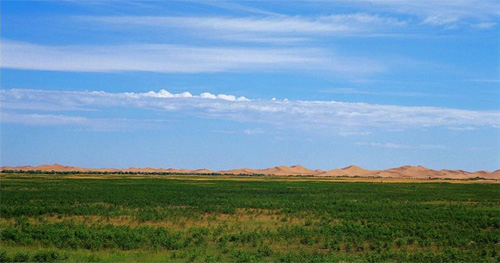
Babu’s life and the life of the people in the desert have deeply changed in 30 years. With an investment of hundreds of millions of Euros from Elion Group, 6,000 square km of desert turned into a green and fertile territory. In 1988, less than ten species lived in Kubuqi; in 2016, 530 species (birds, animals, insects etc.) populated the area. Green technology and the tenacity of all those involved led to finding the best economical solutions. The locals have been taught how to grow licorice, an indispensable plant for the traditional Chinese medicine. It used to grow wild in the region, but now it is the main accelerator for the agricultural activities. It is drought resistant, it does not require special farming or irrigation and, besides, it enriches the soil with nitrogen, turning the desert or any alkaline soil into a fertile land. Thus, after a 3-4 years cycle, the plant gives way for potatoes, tomatoes or even vine. The logistic support and the seedlings were offered by Elion and, in return, the people laid their land on the line and committed to taking care of the plantations and to harvest the crops. In the end, the licorice is bought also by Elion, according to a previously established price.
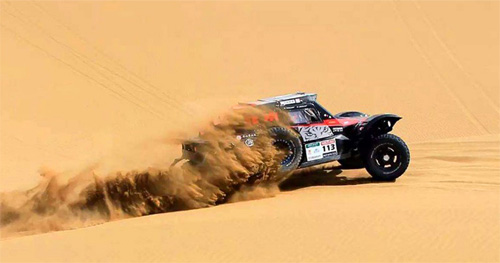
In 2006, a new village was built by Elion, with an investment of more than 2,5 millions EUR and the help of the local government. Houses are spacious and modern, the roads are facile, the utilities in hand. The relocation of the people was an ecological one and it has created new job or business opportunities for them. From a few (maybe) hundreds of Euros, the income per person has grown to over 3,800 EUR. People do not worry any longer about food or clothing or about the education of their children. Babu’s story has become a successful one. Along with his family, he opened a restaurant where they serve traditional Mongolian dishes. He started this business with the help of Elion Group, using the financial compensation he had received for his deserted land. The local government also gave subventions to the farmers in exchange for the lands they ceded to be reforested. Specific trainings in Mongolian cuisine were also held by the local government – and Babu attended. He also took a special training in driving off-road vehicles through the desert. Then he got his driving license and along with two neighbors he started another business: driving tourists in off-road vehicles through the wild sandy dunes. This keeps him busy all day long: he’s got 16 off-road vehicles (Big Wave, UTV, Farmer, VJ, Great Shatuo) and ten drivers. The initial investment was made up for in only two years. The net profit of each of the partners was over 1,200 EUR.
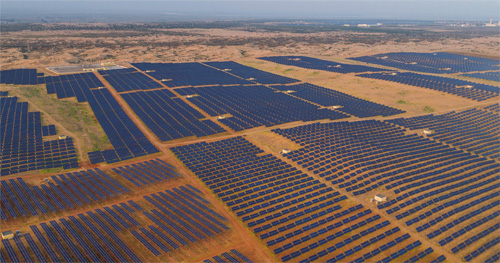
“Now we live in an area rich in water, so I would like to develop another business, with aquatic activities – motorboats for the tourists. I would also like to extend my restaurant network and maybe open one or several hotels, along with my partners” says the 40 years old man, surrounded by his family – a wife who followed him in the desert because he was “kind and honest” and their two daughters. “I wish for them to have access to good education so maybe one day they could live in a big city, if they want to. I wish to offer them a better life than the one I used to have as a child” says Babu. His olive-skin face radiates happiness – a happiness he probably never thought it might come to him, 30 years ago. “My life was flat then, with no perspective. Now, in a full day during the tourist season, I can make even 500 EUR” says Babu. The best time to visit the region is between April and October. The number of annual tourists has recently gone over 200,000 people. “We’ve got people from all over the world coming here, not just from China. Even if we do not know how to speak English, we get help from our youngsters, our children, who study it in school. Many foreign visitors hire translators or they know a bit of Chinese, so we manage to communicate” explains Babu, the former shepherd of the desert turned businessman.
The Kubuqi success set off another similar projects already taking place in the provinces of Gansu, Hebei, Xinjiang and Tibet. Specialists from Saudi Arabia and Pakistan are studying the case and now China has the possibility to export the model. The success of this formula was undoubtedly provided by the excellent cooperation between the three components of the PPP partnership: the governmental policies, as foundation and support; the private company, as main investor and leader; the local community, a direct beneficiary – and all of this delivered in terms of market economic and driven by technological innovation aiming to develop a green ecological lifestyle sustained by renewable energy. Presently, China is the leader of the renewable energy market: for instance, five of the world’s top six solar manufacturing companies come from this country. 650,000 solar panels are located only in the Kubuqi desert, generating 1,000 megawatts of electricity into the national grid.
The Kubuqi model perfectly illustrates the way private companies can fight environmental problems, by helping local communities to prosper and protect the environment and also by making profit. This particular project has drawn the attention of the entire world and the UN awarded it with the “2013 Global Dryland Champion Award”; this is an appreciation of the huge impact this project has had on the lives of the people and on the environment. We only need to look at the story of shepherd Babu in order to understand what the transformation of the desert has meant for an entire population – and what it could mean for the future of this planet.


